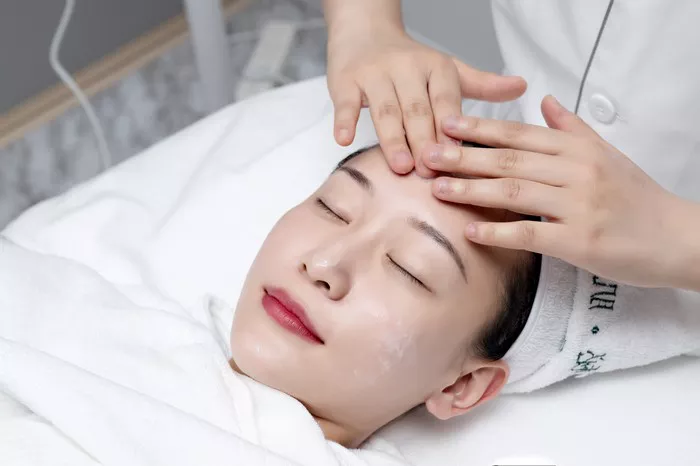Pigmentation is the process by which the skin acquires its color through the production of melanin. Melanin is created by specialized cells called melanocytes, located in the basal layer of the epidermis. The distribution and quantity of melanin determine the color of the skin, hair, and eyes. While this natural pigmentation offers protection against the sun’s ultraviolet rays, it can also result in uneven skin tone when the process becomes imbalanced.
Melanin production is not static. It reacts dynamically to various stimuli including sunlight, hormonal changes, aging, and skin damage. When stimulated excessively, melanocytes produce more melanin, leading to darkened areas or patches known as hyperpigmentation. On the other hand, when melanin production is reduced or disrupted, lighter patches or hypopigmentation may appear. The causes and consequences of pigmentation are deeply tied to internal body processes as well as environmental influences.
Why Does Hyperpigmentation Occur?
Hyperpigmentation is a common condition characterized by darkened patches or spots on the skin, resulting from excess melanin production. One of the primary causes is sun exposure. Ultraviolet radiation activates melanocytes, which produce more melanin as a defense mechanism. Over time, frequent and unprotected exposure leads to sunspots, particularly on the face, shoulders, and arms.
Hormonal changes are another major contributor. Women are especially susceptible during pregnancy or when taking oral contraceptives. The condition known as melasma causes symmetrical brown or gray-brown patches, often on the cheeks, forehead, and upper lip. Melasma tends to worsen with sun exposure and is notoriously stubborn to treat.
Skin trauma, such as acne, eczema, or burns, can also lead to hyperpigmentation. This post-inflammatory response occurs when the skin heals but leaves behind darkened areas. It is especially common in individuals with darker skin tones, where melanin production is more reactive to injury or irritation.
What Are the Types of Pigmentation Disorders?
There are several forms of pigmentation disorders, each with distinct features and causes. Melasma is among the most common and is usually associated with hormonal changes. It often affects women and can be long-lasting. Treatment requires a combination of sun protection, topical medications, and sometimes medical procedures.
Freckles and age spots, also known as solar lentigines, are signs of chronic sun damage. These spots tend to develop gradually and increase in number with age and continued UV exposure. They are most common in individuals with fair skin but can affect anyone.
Another category includes conditions like vitiligo and albinism, which involve hypopigmentation. Vitiligo is an autoimmune disorder that destroys melanocytes, resulting in white patches on the skin. Albinism is a genetic condition characterized by little or no melanin production from birth, affecting the skin, eyes, and hair. While these are less common, they highlight the diversity of pigmentation-related conditions.
How Is Pigmentation Diagnosed?
Diagnosing pigmentation disorders requires a careful examination by a dermatologist. Doctors assess the location, pattern, and color of the affected areas. They may use tools like Wood’s lamp, which emits ultraviolet light to help identify changes in pigmentation invisible to the naked eye. In some cases, a biopsy might be taken to rule out other skin diseases.
A thorough medical history is also essential, including questions about sun exposure, hormonal status, medications, and any recent skin injuries. Understanding these factors helps the physician determine whether the pigmentation is due to internal or external causes, and guides the treatment plan accordingly.
What Are the Treatment Options?
Treating pigmentation depends on the cause and severity of the condition. The first and most crucial step is sun protection. Daily use of broad-spectrum sunscreen prevents further darkening and aids in the effectiveness of any treatment. Sunscreen should be reapplied throughout the day, especially when outdoors.
Topical treatments are often prescribed to lighten dark spots. Ingredients like hydroquinone, azelaic acid, kojic acid, and retinoids work by inhibiting melanin production or accelerating skin turnover. These agents may be used alone or in combination, depending on the individual’s skin type and response.
Chemical peels are another option. They involve the application of a chemical solution to exfoliate the outer layer of skin, encouraging the growth of new, evenly pigmented skin. Superficial peels, like glycolic acid, are often used for mild discoloration, while deeper peels may be reserved for more stubborn cases.
Laser therapy and intense pulsed light (IPL) can target pigmentation selectively by breaking down melanin deposits. These procedures require skilled professionals and may not be suitable for all skin types. Overuse or incorrect application can risk scarring or worsening pigmentation, especially in darker skin tones.
Can Lifestyle Changes Help Manage Pigmentation?
Although treatment plays a vital role, lifestyle and skincare habits are equally important in managing pigmentation. Consistent use of sun protection, even on cloudy days or indoors near windows, reduces UV-induced melanin production. Wearing hats and avoiding the sun during peak hours also helps prevent flare-ups.
A gentle skincare routine minimizes irritation, which can trigger post-inflammatory hyperpigmentation. Harsh scrubs and aggressive treatments should be avoided. Instead, look for calming ingredients like niacinamide and licorice extract, which can brighten skin without inflammation.
Diet and overall health also influence skin appearance. Antioxidant-rich foods, adequate hydration, and avoidance of smoking support skin repair and resilience. While these factors alone may not cure pigmentation, they contribute to healthier, more balanced skin.
Are There Long-Term Solutions?
Pigmentation disorders are often chronic or recurrent, requiring ongoing care rather than a one-time fix. This makes realistic expectations and patient education essential. Results from treatment take time, often weeks or months, and persistence is key.
Dermatologists often recommend maintenance therapy once pigmentation has improved. This includes continued sun protection and possibly a lower concentration of topical agents to prevent relapse. In many cases, a combination of therapies yields the best outcome.
For individuals with conditions like melasma or post-inflammatory hyperpigmentation, periodic check-ins with a skincare professional can ensure that flare-ups are addressed early. Emotional support and self-acceptance are also crucial, as visible pigmentation changes can affect self-esteem and confidence.
How Can Prospect Advances Improve Pigmentation Care?
Ongoing research in dermatology holds promise for more targeted and effective pigmentation treatments. Advances in laser technology, for instance, aim to minimize side effects and improve outcomes for patients with darker skin tones. Scientists are also exploring new topical compounds that can regulate melanin production with fewer risks than traditional agents.
Personalized medicine may become increasingly important. By analyzing genetic and environmental profiles, treatments can be tailored to the individual’s specific pigmentation pattern and skin response. This precision approach could reduce trial-and-error and enhance both safety and satisfaction.
Moreover, awareness and education continue to play a pivotal role. As people better understand how pigmentation works, they are more likely to seek early intervention, follow treatment regimens, and adopt sun-safe behaviors. The conversation around skin tone is also evolving, with growing emphasis on inclusivity and embracing all shades of beauty.
Related Topics































